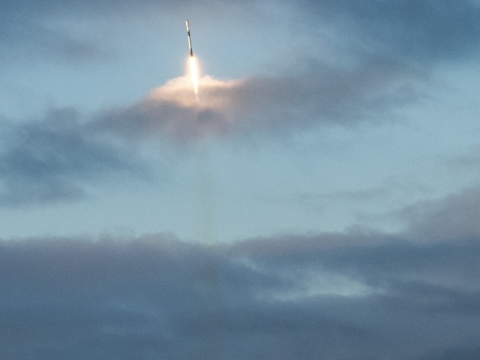Insight, Oversight Dominate Intelligence Priorities
AFCEA/INSA Intelligence and National Security Summit 2014
The SIGNAL Magazine Online Show Daily
Day 2
Quote of the Day:
“The things we see today may be abominations, but they are not aberrations. They are the new normal.”—Brig. Gen. Michael Groen, USMC, director of intelligence, U.S. Marine Corps.
The U.S. intelligence community is facing the twin challenges of greater oversight of its operations and an increased need for new capabilities to meet emerging and evolving threats worldwide. Not only are intelligence activities being questioned to a greater degree than at any time in recent memory, but also the community is being asked to predict both new threats and the new capabilities that it will need to do its mission.
Those within the community accept the oversight and are striving to work to ensure that public trust is restored. However, this effort includes participating in a public debate that can veer in unpredictable directions without the community being able to reveal secrets or sources in its explanations.
Meanwhile, planners and technologists are working to transform the community to be able to provide effective intelligence on threats that are not even well-defined. This transformation, which will include new technologies and capabilities to help predict emerging threats, must be accomplished concurrent with activities against threats that are evolving to defeat attempts to counter their activities.
These two issues were the focal point of speakers and panels on the second and final day of the AFCEA/INSA Intelligence and National Security Summit 2014, held September 18-19 in Washington, D.C. As with the first day, top-level leaders of the intelligence community presented different perspectives on how their elements of the community are addressing these challenges.
In addition to those who must be open to oversight, the conference featured two of the top oversight officials in government. Rep. Mike Rogers (R-MI), chairman of the House Permanent Select Committee on Intelligence, and Rep. C.A. Dutch Ruppersberger (D-MD), ranking member of the committee, began the day with a bipartisan approach describing how the U.S. intelligence community has excellent oversight, compared to that of other nations. They related how they met with members of several allied nations who were critical of U.S. intelligence activities, and they realized how good U.S. oversight is.
“Dutch [Ruppersberger] and I have a good idea of what all 16 U.S. agencies are doing,” Rogers said. “Those foreign countries don’t know what their own agencies are doing. They’ll go back [to their nations] and have all the politics with what the NSA [National Security Agency] did, but at the end of the day, we walked out of there realizing what a great system we have,” Rogers declared.
Eleanor Hill, partner, King and Spalding and a former Defense Department inspector general, pointed out that the House Permanent Select Committee on Intelligence has a statutory provision of oversight. Not all committees have that capability, she noted. Before the September 11, 2001 attacks, the committee tended to focus on budgets and funding. Since then, it has focused largely on oversight, in-depth work and investigations.
Hill cited three hindrances to effective oversight. First, secrecy complicates oversight. It is very difficult to conduct oversight in a secret environment, she pointed out.
Second, oversight takes time and work. It is hard to do that in Congress. Third, partisanship makes it difficult to conduct an investigation. Hill lauded the bipartisan relationship between Rogers and Ruppersberger in the House Permanent Select Committee on Intelligence.
Other intelligence officials pointed out at several points in the conference that many of the activities criticized by the public actually were known and approved by the appropriate oversight bodies. For example, when FBI Director James Comey was describing how the bureau wanted to be able to conduct vital surveillance of cyberspace, he declared, “With lawful authority, overseen by the judiciary, I need to break encryption on the Internet.”
Comey and other speakers also weighed in with the threat picture that confronts the intelligence community. Calling the FBI “a national security and law enforcement organization that collects and uses intelligence in everything we do,” Comey cited cyber as one of the bureau’s top three priorities. “The Internet is the most dangerous neighborhood around,” he said, adding that cyber attacks are inevitable. “There are two types of companies: those who’ve been hacked, and those who don’t know they’ve been hacked,” Comey offered.
Rogers said, “Cyber is the greatest national security threat that America is not ready to handle. You have international criminal groups acting like countries. We have to protect ourselves.”
David Honey, director for science and technology, Office of the Director of National Intelligence, said chemical, biological, radiological and nuclear defense is high on the priority list. Many of the threats from the Cold War still exist, he maintained, and the war on terrorism has many challenges as terrorist groups reformat. Also, leaders need to know if home-grown violent extremists are lone wolves or the vanguard of a larger movement that will coalesce around their actions.
One extremist threat that has metastasized rapidly is the Islamic State in the Levant (ISIL). Comey expressed concern about travelers—Americans who have departed for the Middle East to join the radicals. “I’m far more concerned about their coming—they will come back,” he stated. “We are trying to understand who is going and who is coming.”
Rogers acknowledged the need for a U.S. involvement in the ground war against ISIL. “If the boots on the ground are to work, you will have to have U.S. personnel with special capabilities downrange,” he declared. This expertise includes intelligence collectors and those specializing in command and control logistics. Without this, it won’t work,” he stated.
Ruppersberger said the United States needs to make a clear commitment to the world. “We have to show the world that we’re strong,” he stated. “We’re going to protect our country.”
“It’s amazing how much courage people develop when they know the United States is standing with them,” Rogers added. “We’re in a good position to have a lasting impact if we don’t lose our nerve.”
The emergence of new threats is a pattern likely to continue into the foreseeable future. “The things we see today may be abominations, but they are not aberrations,” stated Brig. Gen. Michael Groen, USMC, director of intelligence, U.S. Marine Corps. “They are the new normal.”
Gen. Groen discussed how the Marine Corps is working its battlespace technology expertise into operations with the other services. The Corps always has had a focus on tactical collectors, and it is bringing that to the battlespace. He pointed out that Marine intelligence survives on its partnerships with Army and Air Force assets.
Lt. Gen. Mary Legere, USA, deputy chief of staff for intelligence (G-2), Headquarters, U.S. Army, said the Army will be depending a great deal on medium-altitude intelligence, surveillance and reconnaissance (ISR). The service also invests a great deal in signals intelligence.
Mark Tapper, special adviser to the deputy chief of staff for intelligence, surveillance and reconnaissance, Headquarters, U.S. Air Force, said the Air Force will continue to pursue advanced technologies such as secure, reliable communications; an effective modeling and simulation environment; and air-specific technologies such as hypersonics. Tapper noted that the boundaries between air and space operations are blurring operationally as well as physically. He said there are air solutions to some space challenges and vice versa.
The Navy recognizes that human intelligence (HUMINT) is central to operations, said B. Lynn Wright, deputy director of naval intelligence, Headquarters, U.S. Navy. Noting that crises and war are a human environment, she added, “We are in the process of rebooting Navy HUMINT.” Naval intelligence also is focusing on getting back to deep-penetration campaigns against hard targets, and it is building high-end digital models so that it does not have to perform training for all scenarios at sea. Wright noted that the Navy will be taking advantage of Air Force and Army unmanned aerial reconnaissance work as it seeks to improve its over-the-horizon situational awareness.
The Coast Guard just commissioned a cyber command, noted Rear Adm. Christopher J. Tomney, USCG, assistant commandant for Coast Guard intelligence and criminal investigations. He called for treating the cyber domain in the same way as the maritime domain. The service also is increasing its HUMINT collection assets. With the work force consuming the bulk of the intelligence budget, the service needs to leverage knowledge management technology. Adm. Tomney cited a need to exploit the power of social media to increase understanding of emerging events. He pointed out that events such as the rise of ISIL and the Arab Spring all had indications in social media.
Michael Vickers, undersecretary of defense for intelligence, listed five major intelligence capability areas for defense intelligence. The first is global coverage; the second involves improving the capability to operate in an anti-access/area-denial environment; the third entails sustaining an advantage in counterproliferation and counterterrorism operations; the fourth area focuses on developing cyber operations capabilities, including a cyberforce and cyber intelligence capabilities; and the fifth area involves strengthening counterintelligence and security.
For specific technology thrusts, Peter Highnam, director of the Intelligence Advanced Research Projects Agency (IARPA), cited biomedical technologies and superconducting as important research areas. Allan Sonsteby, director, Applied Research Labs, Pennsylvania State University, singled out graphene as a technology on the brink of breakthroughs that will offer a host of new capabilities. Citing the commoditization of sensors that is underway, he called for the commoditization of technologies that will improve on or replace batteries. Above all, he said, the greatest technology gains in the future will occur with the confluence of engineering, life sciences and physical sciences.
In at least one case, intelligence technology is being viewed warily. Deborah Frincke, NSA director of research, said the agency is looking at its technologies with a critical eye toward vulnerabilities. “We must have no technological single points of failure that would hurt the agency,” she declared. “The country cannot afford this. We have to look for potential weakness and mitigate those gaps where something working well could be compromised.”
For more in-depth coverage of the AFCEA/INSA Intelligence and National Security Summit 2014, see the event coverage page.





Comments